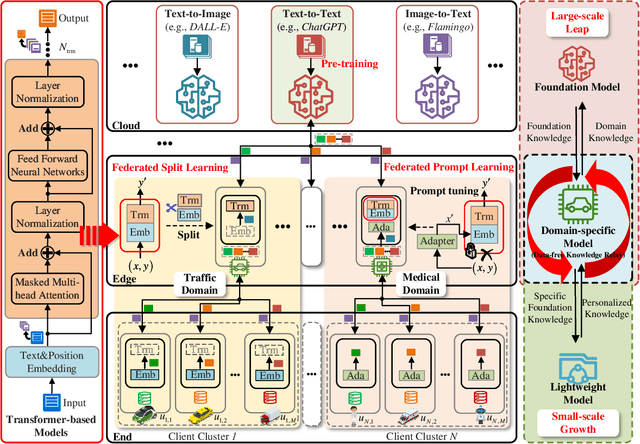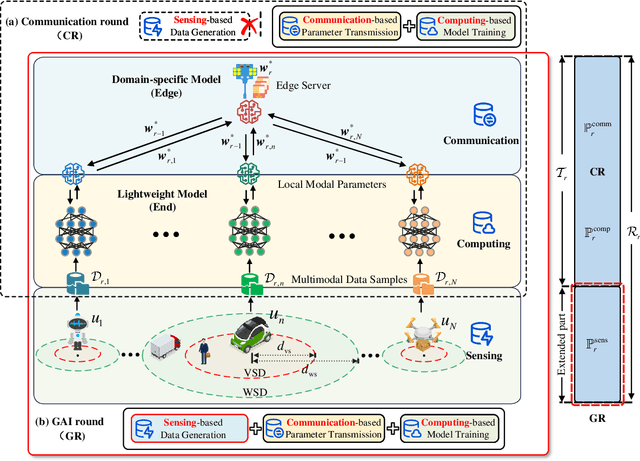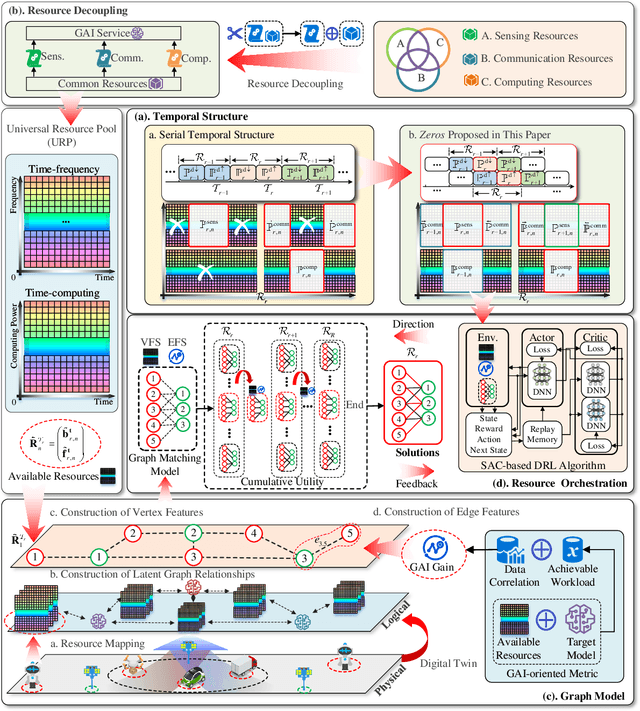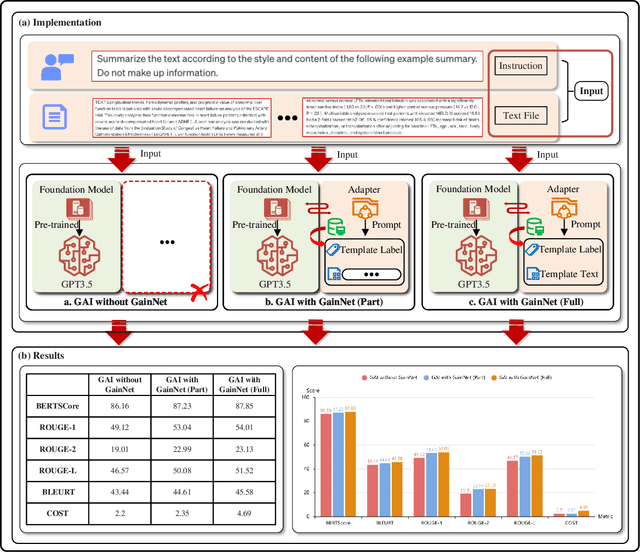Bangzhen Huang
GainNet: Coordinates the Odd Couple of Generative AI and 6G Networks
Jan 05, 2024



Abstract:The rapid expansion of AI-generated content (AIGC) reflects the iteration from assistive AI towards generative AI (GAI) with creativity. Meanwhile, the 6G networks will also evolve from the Internet-of-everything to the Internet-of-intelligence with hybrid heterogeneous network architectures. In the future, the interplay between GAI and the 6G will lead to new opportunities, where GAI can learn the knowledge of personalized data from the massive connected 6G end devices, while GAI's powerful generation ability can provide advanced network solutions for 6G network and provide 6G end devices with various AIGC services. However, they seem to be an odd couple, due to the contradiction of data and resources. To achieve a better-coordinated interplay between GAI and 6G, the GAI-native networks (GainNet), a GAI-oriented collaborative cloud-edge-end intelligence framework, is proposed in this paper. By deeply integrating GAI with 6G network design, GainNet realizes the positive closed-loop knowledge flow and sustainable-evolution GAI model optimization. On this basis, the GAI-oriented generic resource orchestration mechanism with integrated sensing, communication, and computing (GaiRom-ISCC) is proposed to guarantee the efficient operation of GainNet. Two simple case studies demonstrate the effectiveness and robustness of the proposed schemes. Finally, we envision the key challenges and future directions concerning the interplay between GAI models and 6G networks.
Integrated Sensing, Communication, and Computing for Cost-effective Multimodal Federated Perception
Nov 07, 2023Abstract:Federated learning (FL) is a classic paradigm of 6G edge intelligence (EI), which alleviates privacy leaks and high communication pressure caused by traditional centralized data processing in the artificial intelligence of things (AIoT). The implementation of multimodal federated perception (MFP) services involves three sub-processes, including sensing-based multimodal data generation, communication-based model transmission, and computing-based model training, ultimately relying on available underlying multi-domain physical resources such as time, frequency, and computing power. How to reasonably coordinate the multi-domain resources scheduling among sensing, communication, and computing, therefore, is crucial to the MFP networks. To address the above issues, this paper investigates service-oriented resource management with integrated sensing, communication, and computing (ISCC). With the incentive mechanism of the MFP service market, the resources management problem is redefined as a social welfare maximization problem, where the idea of "expanding resources" and "reducing costs" is used to improve learning performance gain and reduce resource costs. Experimental results demonstrate the effectiveness and robustness of the proposed resource scheduling mechanisms.
 Add to Chrome
Add to Chrome Add to Firefox
Add to Firefox Add to Edge
Add to Edge